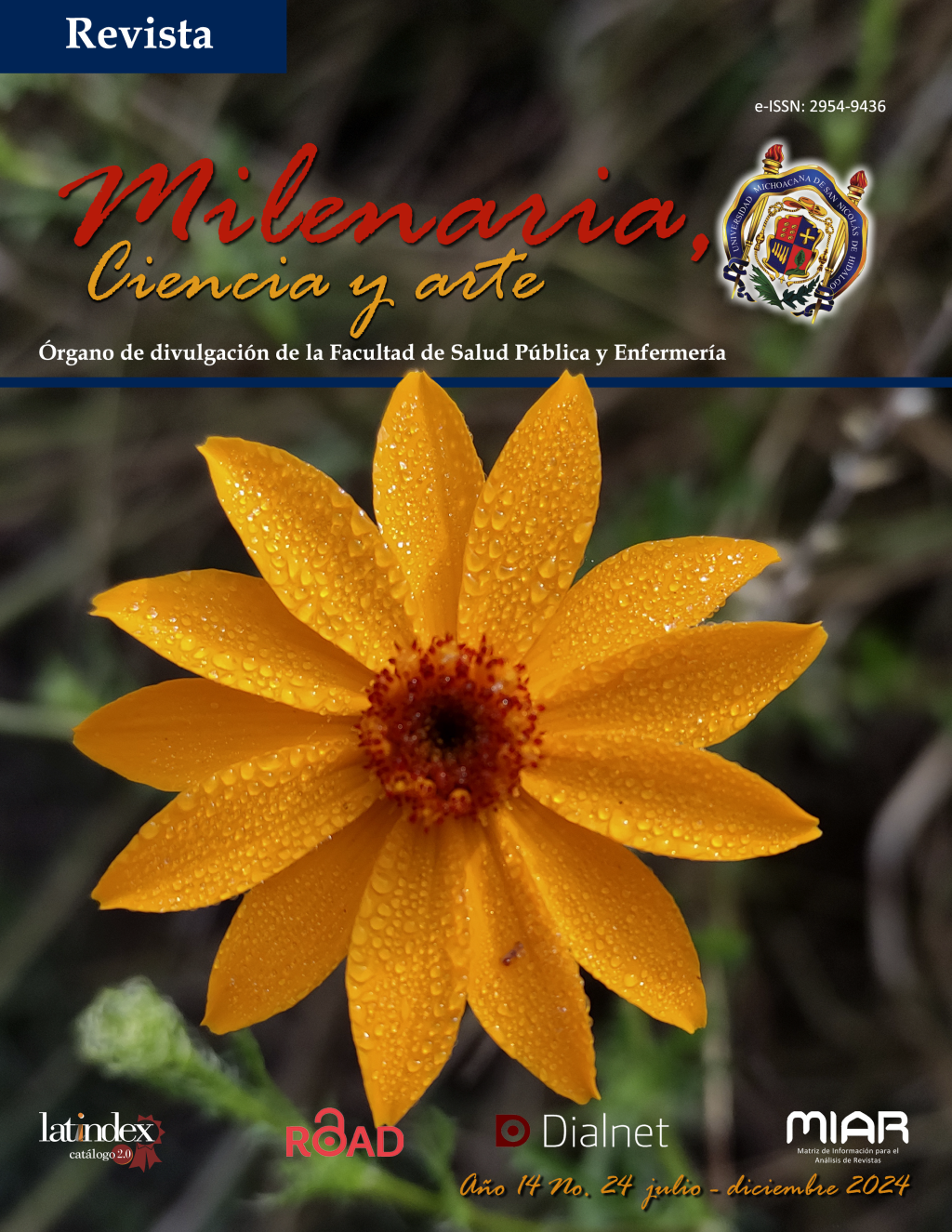Haematococcus pluvialis una fuente alterna de astaxantina
DOI:
https://doi.org/10.35830/mcya.vi24.489Palabras clave:
Haematococcus pluvialis, astaxantina, antioxidantesResumen
Actualmente el consumo de antioxidantes es bastante común ya que contribuye en prevenir o neutralizar el efecto de los radicales libres que pueden causar distintas enfermedades. Una fuente rica en estos antioxidantes es la microalga Haematococcus pluvialis la cual tiene gran interés biotecnológico y económico atribuido a su alto contenido de antioxidantes entre los que destaca la astaxantina, la cual ha tomado gran importancia y aplicación biotecnológica atribuido a sus beneficios en la salud por su consumo, atribuido a que tiene elevada capacidad antioxidante, ayuda a regular el nivel de azúcar en sangre, contribuye en la prevención de enfermedades cardiovasculares y puede ayudar a tratar o prevenir el cáncer, todo esto sin ocasionar efectos adversos sobre la salud humana, por lo que a partir de los beneficios que esta genera es ampliamente utilizada en las industrias alimentarias, de bebidas, cosmética, farmacéutica y nutraceútica para la obtención de nuevos productos enriquecidos con astaxantina. Debido a la relevancia que tiene la producción de astaxantina actualmente se evalúa el efecto de los factores de crecimiento en la fase verde sobre la actividad antioxidante de los extractos celulares de la microalga H. pluvialis.
Descargas
Citas
Ambati R. R., Sindhuja H. N., Shylaja M. D., Kadimi U. S., Ravi S., Gokare A. R. (2013). Effective inhibition of skin cancer, tyrosinase, and antioxidative properties by astaxanthin and astaxanthin esters from the green alga Haematococcus pluvialis. Journal of Agricultural and Food Chemistry, 61(16), 3842-3851. https://doi.org/10.1021/jf304609j
Ambati R. R., Phang S. M., Ravi S., Aswathanarayana R. G. (2014). Astaxanthin: sources, extraction, stability, biological activities and its commercial applications--a review. Mar Drugs, 7;12(1), 128-52. https://doi.org/10.3390/md12010128
Coronado H., M., Vega y León S., Gutiérrez T. R., Vázquez F. M., Radilla V. C. (2015). Antioxidantes: perspectiva actual para la salud humana. Revista chilena de nutrición, 42(2), 206-212. https://doi.org/10.4067/S0717-75182015000200014
Davinelli S., Nielsen M. E., Scapagnini G. (2018). Astaxanthin in skin health, repair, and disease: a comprehensive review. Nutrients, 10(4), 522. https://doi.org/10.3390/nu10040522
Fábregas J., Domínguez A., Regueiro M., Otero A. (2000). Optimization of culture medium for the continuous cultivation of the microalga Haematococcus pluvialis. Applied Microbiology and Biotechnollogy, 53, 530–535. https://doi.org/10.1007/s002530051652
Harker M., Tsavalos A. J., Young A. J. (1995). Use of response surface methodology to optimize carotenogenesis in the microalga, Haematococcus pluvialis. Journal of Applied Phycology, 7(4), 399–406. https://dx.doi.org/10.1007/bf00003797
Higuera-Ciapara I., Félix-Valenzuela L., Goycoolea F. M. (2006). Astaxanthin: a review of its chemistry and applications. Critical Reviews in Food Science and Nutrition, 46:2, 185-196. https://doi.org/10.1080/10408690590957188
Hussein G., Nakamura M., Zhao Q., Iguchi T., Goto H., Sankawa U., Watanabe H. (2005). Antihypertensive and neuroprotective effects of astaxanthin in experimental animals. Biol Pharm Bull, 28(1), 47-52. https://doi.org/10.1248/bpb.28.47
Kuan S. K., Sze Y. L., Chien W. O., Xiaoting F., Xiaoling M., Tau C. L., Pau L. S. (2019). Recent advances in biorefinery of astaxanthin from Haematococcus pluvialis. Bioresource Technology, 288. https://doi.org/10.1016/j.biortech.2019.121606
Oslan S. N. H., Shoparwe N. F., Yusoff A. H., Rahim A. A., Chang C. S., Tan J. S., Oslan S. N., Arumugam K., Ariff A. B., Sulaiman A. Z. (2021). A review on Haematococcus pluvialis bioprocess optimization of green and red stage culture conditions for the production of natural astaxanthin. Biomolecules, 11;256. https://doi.org/10.3390/biom11020256
Shah M., Mahfuzur R., Liang Y., Cheng J. J., Daroch M. (2016). Astaxanthin-producing green microalga Haematococcus pluvialis: From Single Cell to High Value Commercial Products. Frontiers in Plant Science, 7. https://doi.org/10.3389/fpls.2016.00531
Xin L., Xiaoqian W., Chuanlan D., Shasha Y., Zhengquan G., Chaowen X., Spiros N. A., Guangce W., Jian L. (2020). Biotechnological production of astaxanthin from the microalga Haematococcus pluvialis. Biotechnology Advances, 43. https://doi.org/10.1016/j.biotechadv.2020.107602
Yuanyuan R., Jinquan D., Junchao H., Zhaoming W., Lanbo Y., Yuge B., Feng Ch. (2021). Using green alga Haematococcus pluvialis for astaxanthin and lipid co-production: Advances and outlook. Bioresource Technology, 340. https://doi.org/10.1016/j.biortech.2021.125736
Publicado
Cómo citar
Número
Sección
Licencia
Derechos de autor 2024 Milenaria, Ciencia y arte

Esta obra está bajo una licencia internacional Creative Commons Atribución-NoComercial-CompartirIgual 4.0.





